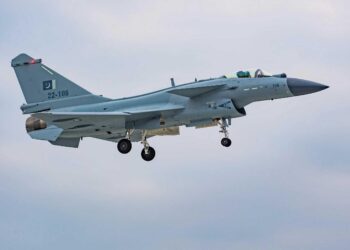In fiscal year 2009, the Department of Defense (DOD) spent nearly $384 billion on contracts. This investment, representing over 70 percent of total government contract spending, highlights the great need to better manage risk in acquisitions.
But DOD has not always managed risks effectively: major systems continue to take longer to develop, cost more, and deliver fewer quantities and capabilities than originally planned. In addition, poorly managed growth in services spending has contributed to disappointing program outcomes.
DOD weapon system acquisition and contract management have been on GAO’s high-risk list for nearly 20 years. This testimony focuses on (1) planning of DOD’s acquisitions; (2) contract types and the award process, including bid protests; (3) outcomes of major acquisition programs; and (4) acquisition and contractor workforce management. It also highlights relevant reforms in each area.
This statement is based on GAO’s body of work on DOD acquisitions and contracting and on GAO’s statutory role in issuing bid protest decisions. GAO has made numerous recommendations in prior work but is not making any new recommendations in this testimony.
The first and perhaps best opportunity to reduce risk in an acquisition program is in the early planning phase when critical decisions with significant implications for the program’s overall success are made. Early and effective planning helps minimize risks in both weapon system and services acquisitions. GAO has reported on the importance of prioritizing needs, adequately defining requirements, and using a solid, executable business case before committing resources to a program.
DOD must demonstrate that the warfighter’s needs are valid and can best be met with the chosen concept and that the chosen concept can be developed and produced with existing resources. DOD can also protect the government’s interest by selecting contracting instruments that provide the proper allocation of risk between the government and contractor and by ensuring competition.
Promoting competition can save money, improve contractor performance, and promote accountability. GAO’s bid protest process also serves valuable public interests by providing transparency in the procurement system and guidance to the procurement community without undue disruption to the acquisition process. Risks that are not effectively managed in the earlier phases may result in poor program outcomes as programs move into the execution phase of the acquisition process. Problems are much more costly to fix in later stages than early in the acquisition.
Last year we reported that the cumulative cost growth in DOD’s portfolio of 96 major defense acquisition programs was $296 billion, and the average delay in delivering capabilities was 22 months. These outcomes mean that other critical defense and national priorities may go unfunded and that warfighters may go without the capabilities they need.
Central to better managing risks is a capable acquisition workforce. However, DOD lacks key information about the current number and skill sets of its acquisition workforce and what it needs. To supplement its in-house acquisition workforce, DOD relies heavily on contractor personnel. Such reliance is symptomatic of DOD’s overall reliance on contractors to provide additional capacity and expertise. Yet, precision on the size of the total contractor workforce and what roles they are fulfilling is elusive, hindering DOD’s ability to make key workforce decisions and increasing the risk of transferring government responsibilities to contractors.
The current reform environment provides an opportunity to leverage the lessons of the past and manage risks differently. This environment is shaped by significant acquisition reform legislation, constructive changes in DOD’s acquisition policy, and initiatives by the administration, including making difficult decisions to terminate or trim numerous weapon systems. To sustain momentum and make the most of this opportunity, it will be essential that decisions to approve and fund acquisitions be consistent with the reforms and policies aimed at getting better outcomes.
Read Full Report in PDF Format.









